Chow Chow
From Wikipedia, the free encyclopedia
This article is about the breed of dog. For the pickled relish, see
Chow-chow (food).
Chow Chow
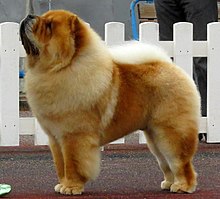 |
| Other names |
Chow, Chowdren, 鬆獅犬 |
| Origin |
China |
| [hide]Traits |
| Weight |
Male |
55–70 lb (25–32 kg)[1] |
|
Female |
45–60 lb (20–27 kg)[1] |
| Height |
17 to 20 inches (43 to 51 cm)[1]:4–5 |
| Coat |
Thick and coarse |
| Color |
- Red (light gold to deep red-brown)
- Cinnamon (light tan to brown)
- Black
- Cream
- Blue
|
| Litter size |
4–7 |
| Life span |
11–13 years[2] |
|
|
|
| Domestic dog (Canis lupus familiaris) |
The
Chow Chow (sometimes simply
Chow[1]:7–8) is a
dog breed originally from
northern China,
[3] where it is referred to as
Songshi Quan (
Pinyin: sōngshī quǎn 鬆獅犬), which means "puffy-lion dog". The breed has also been called the
Tang Quan, "Dog of the
Tang Empire." It is believed
[4][5] that the Chow Chow is one of the native dogs used as the model for the
Foo dog, the traditional stone guardians found in front of Buddhist temples and palaces. It is one of the few
ancient dog breeds still in existence in the world today.
[6]
History
One writer has proposed that the Chow Chow originated in
China 2,000 years ago or originated in Arctic Asia 3,000 years ago and then migrated to
Mongolia, Siberia and then to China.
[1]:11 DNA analysis indicates that the Chow Chow is one of the
ancient dog breeds.
[7]
The Chow Chow probably originated in the high steppe regions of
Siberia or
Mongolia, and much later used as temple guards in
China, Mongolia and
Tibet.
[citation needed] A
bas-relief from 150 BC (during the
Han Dynasty) includes a hunting dog similar in appearance to the Chow.
[citation needed] Later Chow Chows were bred as a general-purpose
working dog
for herding, hunting, pulling and guarding. From what records survive,
some historians believe that the Chow was the dog described as
accompanying the
Mongolian
armies as they invaded southward into China as well as west into Europe
and southwest into the Middle East in the 13th century AD.
[citation needed]
One Chinese legend mentions large war dogs from Central Asia that
resembled black-tongued lions. One Chinese ruler was said to own 5,000
Chows. The Chinese also used Chows to pull
dog sleds, and this was remarked upon by
Marco Polo.
[1]:11 The Chow Chow was also bred for human consumption.
[8]
A legend says that the original
teddy bears were modeled after
Queen Victoria's
Chow Chow puppy. It's said that she carried the dog everywhere she
went. Her friends disapproved, claiming that it did not befit a Queen to
be seen everywhere with a dog, so they paid a dressmaker to make a
stuffed version of the animal for her.
[1]:7–8
Today, the AKC registers approximately 10,000 Chow Chows a year. The
Canadian Kennel Club registers approximately 350.
[1]:4–5
Appearance
A close-up of the Chow Chow's characteristic blue-black tongue
The Chow Chow is a sturdily built dog, square in profile, with a
broad skull and small, triangular, erect ears with rounded tips. The
breed is known for a very dense
double coat that is either smooth or rough.
[1]:4–5 The fur is particularly thick in the neck area, giving it a distinctive
ruff or
mane appearance. The coat may be shaded/self-red, black, blue, cinnamon/
fawn, or cream.
[1]:4–5[9]
Not all these color varieties are recognized as valid in all countries.
Individuals with patchy or multicolored coats are considered to be
outside the breed standard. Chow Chow eyes are typically deep set and
almond shaped. The breed is distinguished by its unusual
blue-black/purple tongue and very straight hind legs, resulting in a
rather stilted gait.
[1]:4–5
The bluish color extends to the Chow Chow's lips; this is the only dog
breed with this distinctive bluish color in its lips and oral cavity
(other dogs have black or a piebald pattern skin in their mouths).
[1]:4–5 One other distinctive feature is the curly tail.
[1]:4–5
It has thick hair and lies curled on its back. The nose should be
black, but blue-coated Chow Chow can have a solid blue or slate-colored
nose. According to the American Kennel Club breed standards, any other
tone is not acceptable for contests.
[10] FCI countries, however, do allow a self-colored nose in the cream.
[11]
The blue-black/purple tongue gene appears to be dominant, as most
mixed breed dogs that come from a Chow Chow retain that tongue colour.
However, the blue-black/purple tongue can also be found on the
Shar Pei.
This is not to say, that every mixed breed dog with spots of purple on
the tongue is descended from Chow Chow, as purple spots on the tongue
can be found on other
purebred dogs.
[12]
- The distinctive Chow Chow features
-
-
-
-
Bluish lips and oral cavity
-
-
Sturdy build, square in profile
-
Temperament
Chow Chows of different coat colors.
Most commonly kept as
pets, Chow Chows tend to display discernment of strangers and can become fiercely protective of their owners and property. The
American Kennel Club standards, however, consider an all-too aggressive or all-too timid Chow Chow to be unacceptable.
[10] For that reason, some owners have attributed a cat-like personality to the Chow Chow.
[13][14]
Chow Chow are not excessively active, meaning that they can be housed
in an apartment. However, a Chow Chow living in an apartment will need
daily exercise to prevent restlessness and boredom. Upon realizing that
exercise is a daily occurrence, Chow Chow will tend to be more assertive
with owners in anticipation of such activities.
This breed of dog has many strong loyal bonds with friends and
family, but the Chow Chow dog is usually overly protective of one or two
main family member(s).
[15]
It is in the breed’s nature to be quiet and well behaved, but it is
also resistant to training. Chow Chows become very stubborn and attach
to certain individuals, as they age. This is why training them when they
are puppies is so crucial because they gain respect for those who care
for them.
In order to avoid aggressive and over-protectiveness as an adult,
continuous socialization as early as possible could allow the dog to
adjust. When Chow Chows have reached adolescence they reject authority
from any other owner who failed to earn its admiration. Aggression can
be one distinctive behavioural characteristic in this breed, though
while some are of an aggressive nature, many are known to be easy-going
in nature - sometimes adopting an aloof disposition to individuals other
than their owners. Aggression when it does appear is often towards
other dogs of the same sex, especially Chows. Due to their strong
hunting instincts, it is recommended that these dogs stay fenced,
leashed, and away from cats and small dogs. This is why it is crucial
that they are socialized early and consistently in order to act
appropriately with strangers. At first, chow chows are very hesitant in
interacting with strangers. However, this problem can be avoided if the
owners train the chow chow at a young age.
Owning a Chow Chow can raise the cost of homeowners insurance because some companies consider them high-risk dogs.
[16] In a study in the
Journal of the American Veterinary Medical Association, Chow Chow were responsible for 8 out of 238 fatalities related to dog bites from 1979 to 1998.
[17]
- The different Chow Chow colours
-
-
-
-
-
Health
The Chow Chow can suffer from
entropion,
[18][19] glaucoma,
[20][21] juvenile
cataracts,
[22] lymphoma,
[23] hip dysplasia,
[24] diabetes mellitus,
[25] canine
pemphigus,
[26] and
gastric cancer.
[27] Chow Chows are a high risk breed for
autoimmune disease [28] and are at a predisposition for skin
melanoma.
[29]
Due to the Chow Chow's thick coat, fleas can be a problem.
[30]
Famous Chow Chow owners
A Chow Chow competing in Dog Agility
Konrad Lorenz an Austrian
zoologist,
ethologist, and
ornithologist, winner of the 1973
Nobel Prize[31] who is often regarded as one of the founders of modern
ethology, had a Chow Chow mix named Stasi.
[32] He wrote about his dogs in his book
King Solomon's Ring.
Sigmund Freud
had a Chow Chow named Jo-Fi who attended all of his therapy sessions
because he felt that dogs had a special sense that allows them to judge a
person's character accurately, and admitted he depended on Jo-Fi for an
assessment of a patient's mental state.
[33]
U.S. Navy admiral
George Dewey acquired a Chow Chow in Hong Kong in 1898 and named it Bob. Bob rarely left the admiral side and had the run of the cruiser
USS Olympia. Bob died in 1899 due to eating chocolates given to Dewey by well-wishers upon
Olympia's arrival in New York City.
Martha Stewart owns several chows, which are frequently seen on Martha's shows
[1], one of them named Genghis Khan.
[34]
President
Calvin Coolidge and his wife owned a black Chow named Timmy.
[35] Chow Chows were also popular in the 1930s and 1980s.
Elvis Presley and his ex-girlfriend
Linda Thompson had a Chow Chow named Getlow.
[36]
Vanna Bonta[37][38]
has a cream Chow Chow named Sky in a line of her breed of choice, a
blue Chow Chow she had named Seraph, and a red Chow Chow named Beowulf
who was immortalized as a fictional dog in the book Flight.
Janet Jackson had a Chow Chow named Buckwheat.
[39]
Italian footballer
Mario Balotelli bought his girlfriend two Chow Chow puppies in the UK.
[40]
Grooming
A Chow Chow with reddish coat.
The Chow Chow's fur is particularly thick in the neck area, giving it a distinctive ruff or mane appearance.
Chow breed will heavily shed their fur in the seasons of spring and
fall, which requires more grooming attention than other seasons. It is
important that owners use the correct tool in order to avoid harming the
skin and facilitate grooming. Three kinds of brushes that owners can
use on their Chow Chow are a medium-coarse brush for the larger parts of
the body, a slick brush for smaller areas, and a pin brush to maintain
the longer strands of hair.
[41]
Chow Chows are known to have either short and smooth coat, or a rougher
and longer coat. Both create a thick woolly layer, as it gets closer to
the skin. They should be brushed four times a week; however shedding
seasons may require daily grooming. Also, a spray conditioner can help
avoiding breakage and tearing to the thick coat of hair. Lastly, a
monthly bath is required to avoid fleas and keep a clean coat of fur.
[42]
See also
References
Wilcox, Charlotte (April 1, 1999). The Chow Chow. Capstone. ISBN 978-0-7368-0159-1.
External links
 |
Wikimedia Commons has media related to Chow Chow. |
| [show]
Dogs originating in China
|
"Chow Chow Health & Care Information". AKC. Retrieved February 11, 2017.
Case, Linda P. (2005). The Dog: Its Behavior, Nutrition, and Health (2nd ed.), p. 23. Blackwell Publishing. ISBN 0-8138-1254-2.
Sacred Dog of Sinkiang
Foo Dogs are Ancient Guardians
Parker,
Heidi G.; Kim, Lisa V.; Sutter, Nathan B.; Carlson, Scott; Lorentzen,
Travis D.; Malek, Tiffany B.; Johnson, Gary S.; DeFrance, Hawkins B.;
Ostrander, Elaine A.; Kruglyak, Leonid (2004-05-21). "Genetic Structure of the Purebred Domestic Dog" (PDF). Science. 304 (5674): 1160. doi:10.1126/science.1097406. PMID 15155949.
Collie or Pug? Study Finds the Genetic Code. New York Times Online. May 21, 2004. Accessed December 25, 2006.
Schwabe, Calwin W.: Unmentionable Cuisine, page 168. University of Virginia Press, 1979
"Colours and coat types". Chow Chow Club. Retrieved 16 December 2012.
American Kennel Club (1 January 2006). "AKC MEET THE BREEDS®: Chow Chow". American Kennel Club. American Kennel Club® (AKC). Retrieved 10 July 2012.
CHOWCHOW.at (9 June 1999). "The FCI Breed Standard". CHOWCHOW.at. CHOWCHOW.at Alle Rechte vorbehalten. Retrieved 10 July 2012.
Kathy Welsh; Anna Wallace; Vicki DeGruy (2001–2010). "The Truth About Those Black Tongues". Chow Chow Information and Adoption Center. WisconsinChow Chow Rescue. Retrieved 10 July 2012.
The Chow Chow Club, Inc.'s Welfare Committee (1997). "Chow Chow Temperament Evaluation, Handling & Placement Tips for Animal Shelters". Chow Chow Information and Adoption Center. Wisconsin Chow Chow Rescue. Retrieved 10 July 2012.
dogtime. "Chow Chow". dogtime. DogTime Media Network. Retrieved 10 July 2012.
Breed. (n.d.). "Chow Chow. Petsource.org" Retrieved 3 April 2013[unreliable source?]
InsuranceAgents.com. "Will Your Canine Affect Your Homeowners Insurance Policy?". InsuranceAgents.com. AgentInsider.com. Retrieved 10 July 2012.
J. Sacks, Jeffrey; Sinclair, Leslie; Gilchrist, Julie (15 September 2000). "Vet Med Today: Special Report – "Breeds of dogs involved in fatal human attacks in the United States between 1979 and 1998"" (PDF). JAVMA. 217 (6). Archived from the original (PDF) on 2015-04-11.
"Chow Welfare – Entropion".
"Vet Info – Entropion".
"Animal Eye Care".
"VetInfo – Breed Specific Problems".
"VetInfo – Juvenile Cataracts in Dogs".
"Vet Info – Dog Lymphoma Symptoms".
"Canine Hip Dysplasia".
"Diabetes Mellitus".
"Vet Info – Pemphigus".
"Positional Cloning of the Gene(s) for Gastric Cancer in the Chow Chow".
"Establishment of a Genetic Database for Disease Association Studies in the Major Histocompatibility complex for Purebred Dogs".
"Canine Skin Melanoma".
Atkinson, James (1988). Chow Chows. Haupaugge, NY: Barron's Educational Series, Inc. p. 76. ISBN 0-8120-3952-1.
"Konrad Lorenz - Biographical, The Nobel Prize in Physiology or Medicine 1973s". Nobel prize, The Official Web Site of The Nobel Prize. 1973. Retrieved February 11, 2017.
Konrad Lorenz (1961) King Solomon's Ring Translated by Marjorie Kerr Wilson. Methuen, London. 202 pages. ISBN 0-416-53860-6
Coren, Stanley (1997). What Do Dogs Know?. Free Press. p. 128.
The Paddock Play Continues - The Daily Wag - Pets - MarthaStewart.com. Dailywag.marthastewart.com (2013-09-20). Retrieved on 2013-10-23.
Atkinson, James (1988). Chow Chows, p. 5. Barron's Educational Series. ISBN 0812039521.
http://chowtales.com/elvis-presley-chow-getlow/
"Vanna Bonta is into Genes!".
"Vanna Bonta Gets Her Dog a Lion Fur-Do".
"Canine Aristocracy".
Smart, Gordon. "Mario Balotelli loves his chow". The Sun. London.
Chow
Chow Dog Breed | Information on Chow Chows. (n.d.). Pet Information |
Online Resource for Pet Owners | PetWave. Retrieved April 3, 2013, from http://www.petwave.com/Dogs/Dog-Breed-Center/Non-Sporting-Group/Chow-Chow.aspx[unreliable source?]





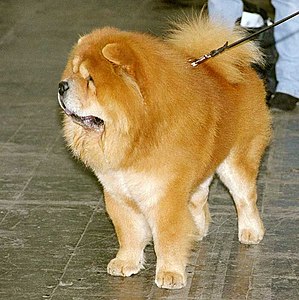

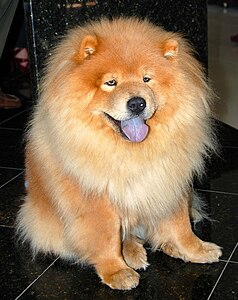

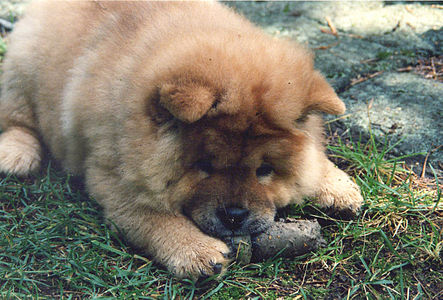
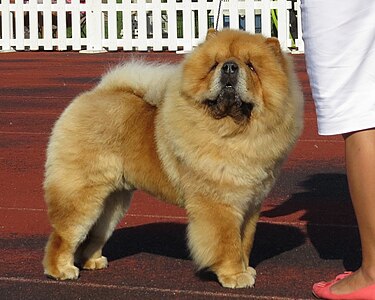
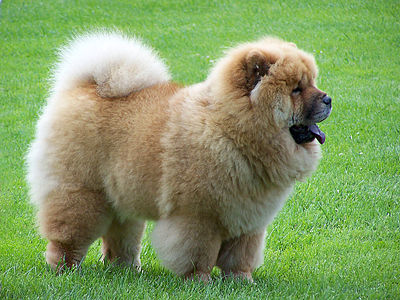


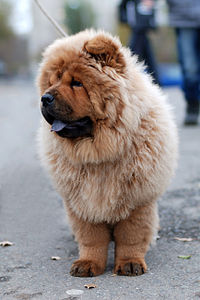

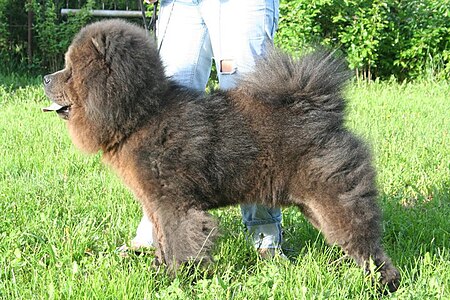




No comments:
Post a Comment